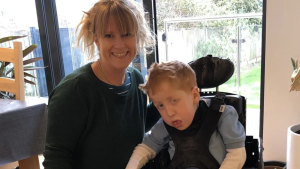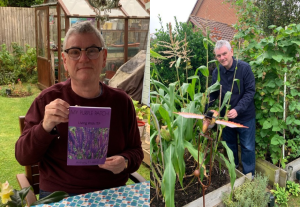Beyond the statistics
More than a statistic is Ezra, who lives with Spinal Muscular Atrophy type 1, a condition in which patients historically had a life expectancy of less than 2 years old.

A rare condition is defined as one that affects fewer than one person in 2,000. But collectively, rare conditions are more common than you might imagine. 1 in 17 of the UK population will be affected at some point in their lives.
Children account for 75 percent of cases, a disproportionate figure because, heartbreakingly, many don’t make it to adulthood.
But while these statistics may give us an insight, they don’t tell the stories behind them — about the real people who live with challenges that few of us can fully comprehend; the long journey to diagnosis, the daily, physical struggle of managing symptoms, and the emotional, logistical and financial toll on patients and their families.
More than a statistic is Ezra, who lives with Spinal Muscular Atrophy type 1, a condition in which patients historically had a life expectancy of less than 2 years old.

Thankfully, Ezra has beaten those odds because of a pioneering new treatment he received at four months old. Ezra is now 7; he attends mainstream school and loves to go on adventures with his family and friends in his powerchair. But life hasn’t been easy.
We filmed with Ezra in 2022 where we learnt about his condition and the daily challenges he endures, but we also saw the endless love and support he receives from his family.
Read our article on Ezra: Shining a light on rare diseases: Spinal Muscular Atrophy.
More than a statistic is Marian Adejokun. Marian lives with a rare condition called Stevens Johnsons Syndrome.

For Marian, the condition was triggered by an extreme allergic reaction to eyedrops which she used after her eyes felt itchy one day. Shortly after her skin started blistering and she describes the pain as if ‘burning from the inside out’.
She was put in an induced coma and doctors were not hopeful she would survive. Thankfully she did, and now Marian has turned a negative experience into a positive one by helping to raise awareness of this rare and potentially deadly condition.
And more than a statistic is Anthony, who was diagnosed with Immune Thrombocytopenia (ITP) 18 years ago.

ITP is a rare autoimmune disorder where the body’s immune system mistakenly destroys platelets in the blood. There are many symptoms, a few of which include rashes, unexplained bruising, bleeding from the nose and gums, mouth blisters and fatigue. There are treatments for ITP, but not yet a cure.
Anthony says: “A normal platelet count is between 150-400 (UK measurement). When I was diagnosed in 2006 my platelet count was 4.”
Thankfully, Anthony is now on treatment, but he has had hundreds of blood tests, sometimes one a week to continually measure his platelet count.
To support others living with the condition, he has worked as a volunteer for the UK charity the ITP Support Association for the past 14 years.
When looking at the figures, it could be easy to dismiss rare conditions as insignificant compared with more common diseases – but for Ezra, Marian and Anthony, they are very significant. They may be few in number on their individual (and sometimes lonely) journey, but collectively people affected by rare conditions are many; 3.5 million in the UK.
Rare Disease Day, which takes place on the last day in February (29 of February, in 2024) is a chance to unite the community and raise awareness – and with it shorten the route to diagnosis and improve outcomes.
This year, for Rare Disease Day 2024, Genetic Alliance UK have teamed up with ITN Business to produce the programme ‘Rare Conditions: The Stories Behind the Stats‘.
Our newly launched programme aims to raise awareness of people affected by rare, genetic, and undiagnosed conditions. Anchored by Sangeeta Kandola, the programme features informative interviews with industry insiders, news items and sponsored editorial profiles, filmed both at the ITN London studio and on location. The programme launched on 29 February 2024 to mark Rare Disease Day.
Head here to explore the full programme.
#StoriesBehindTheStats